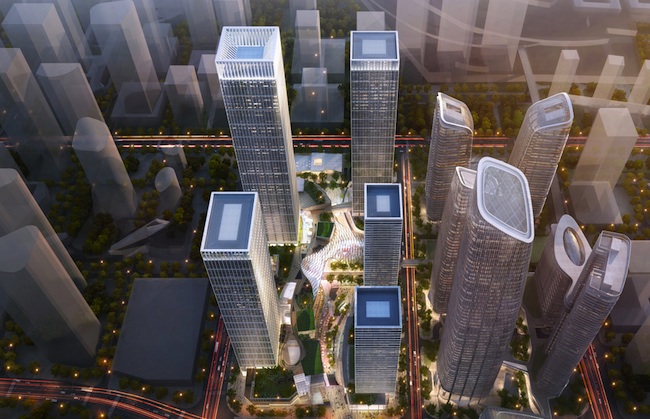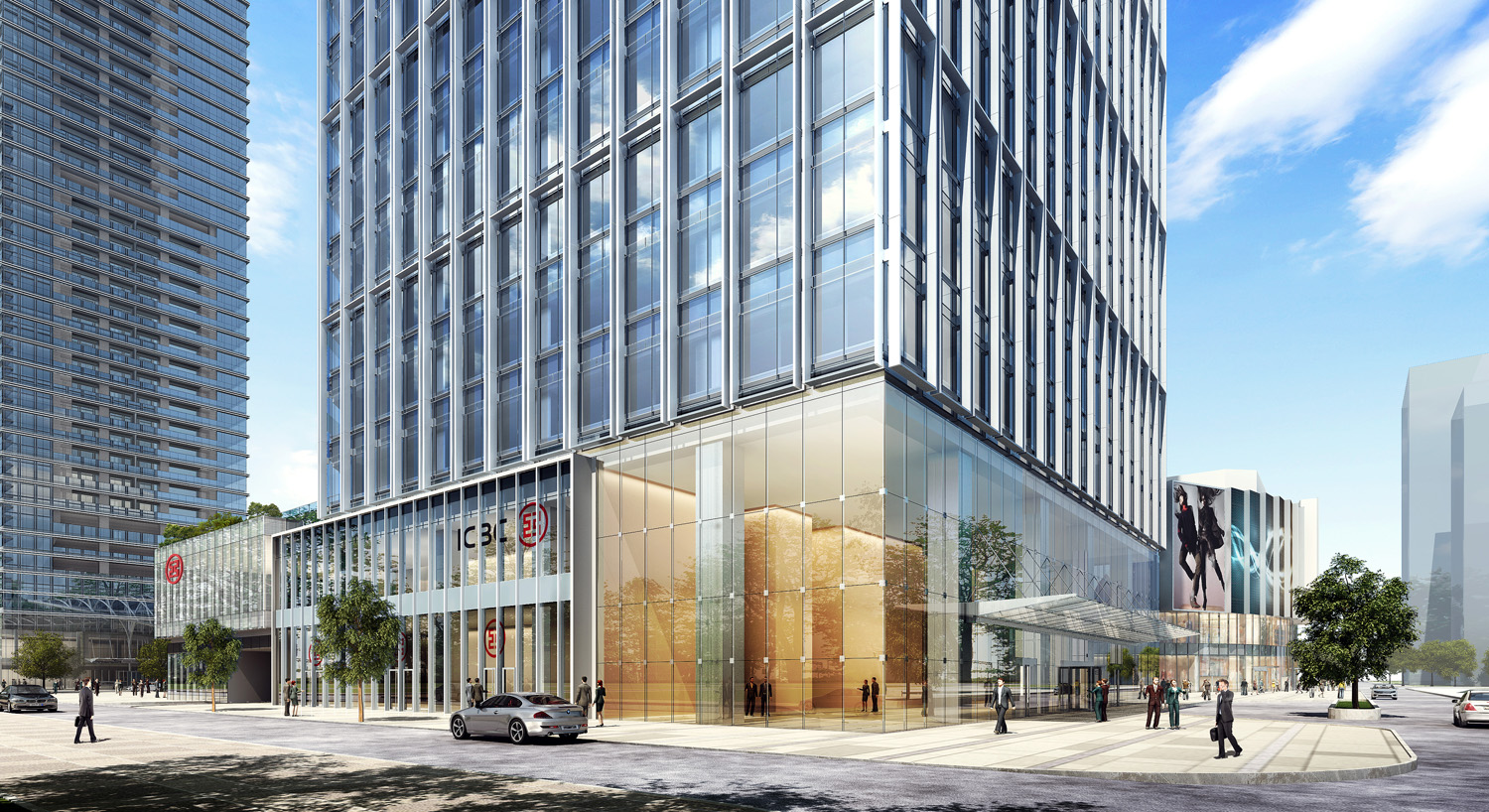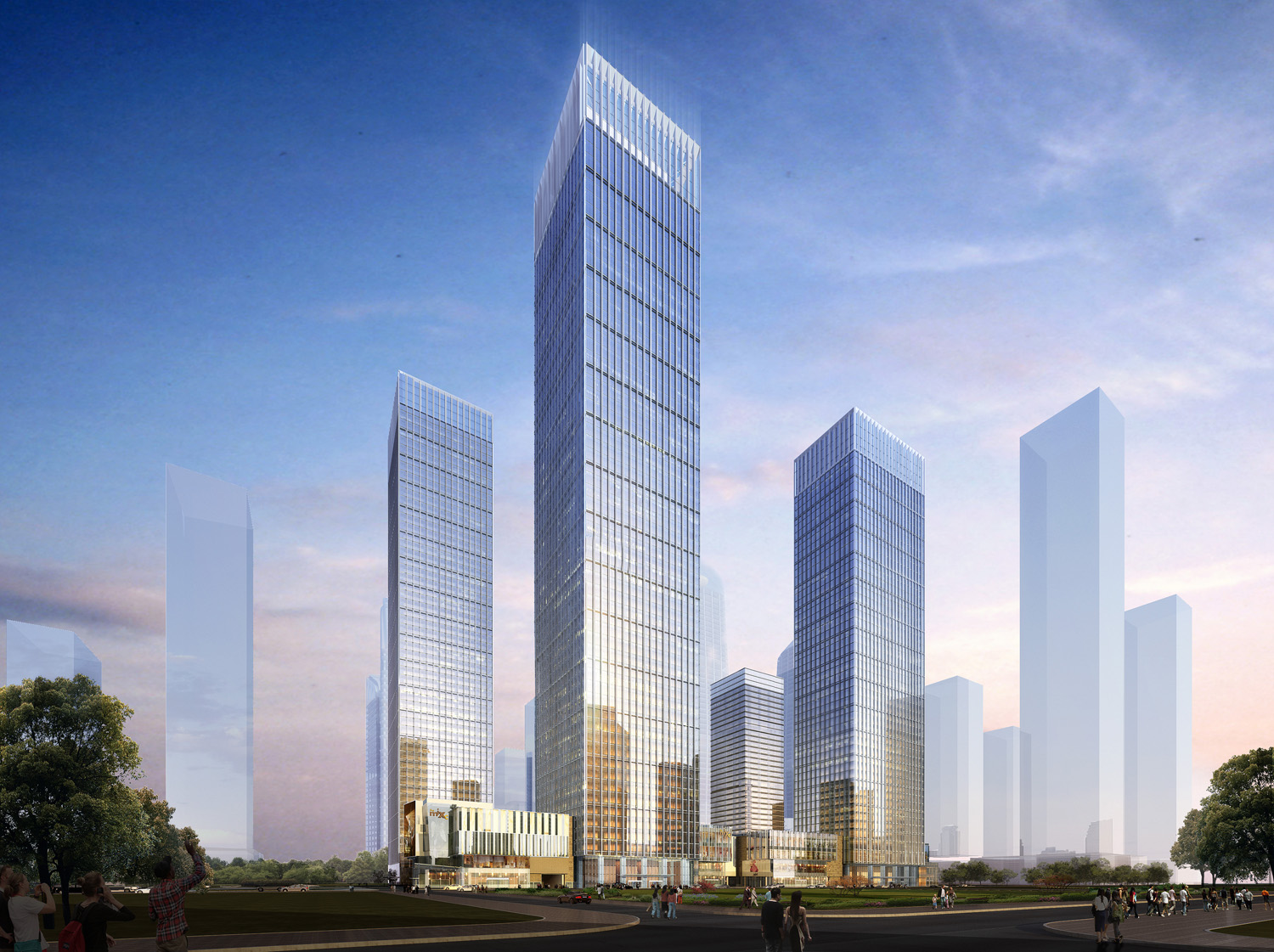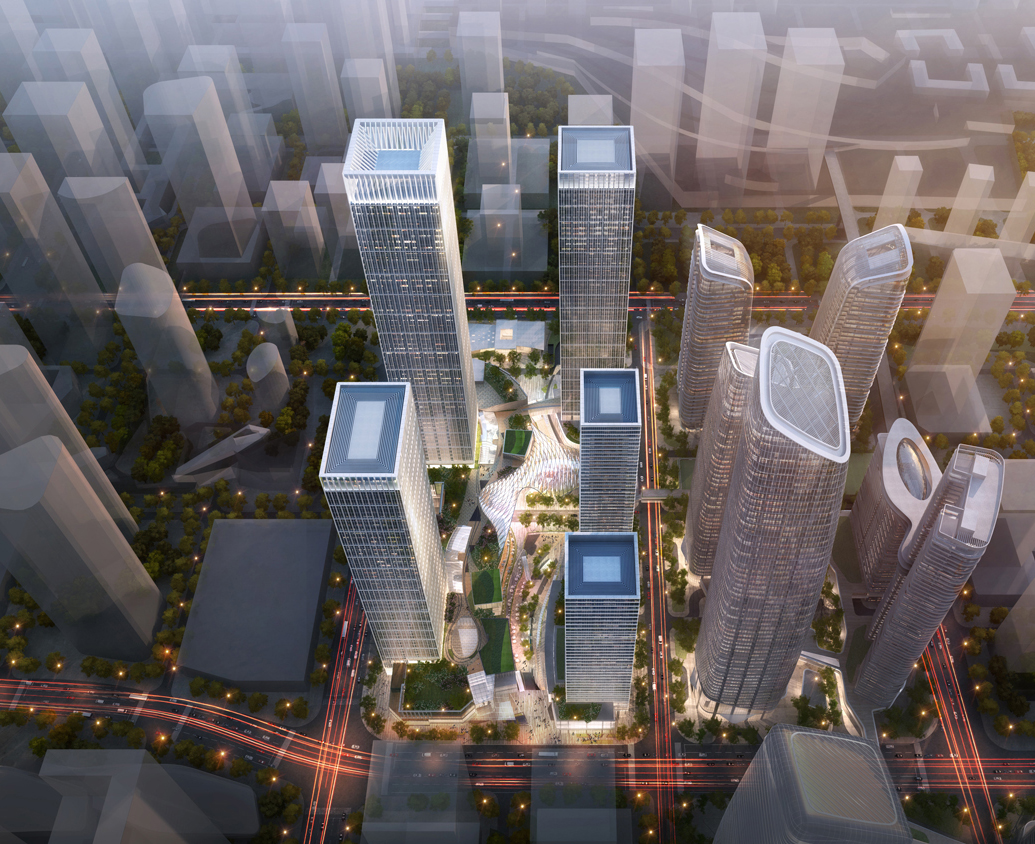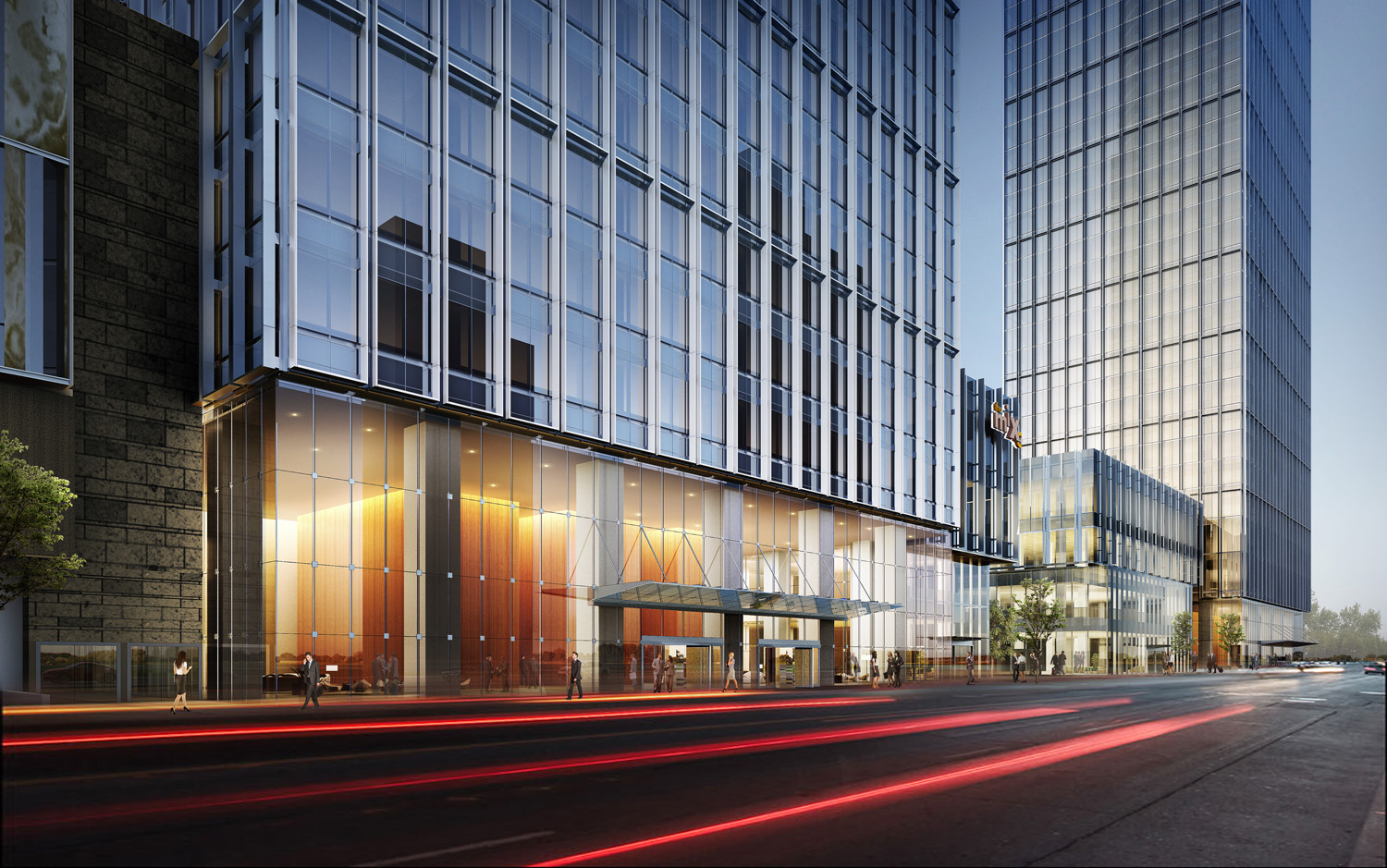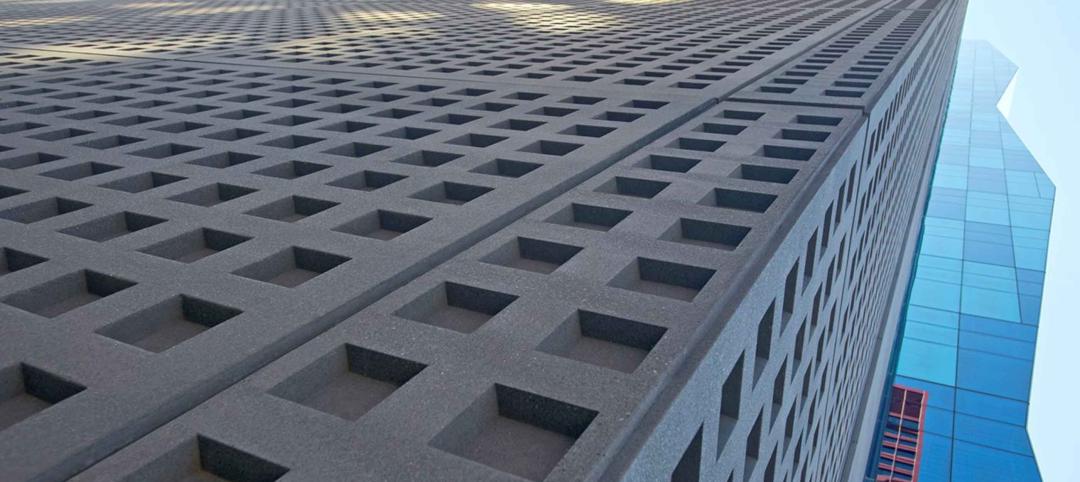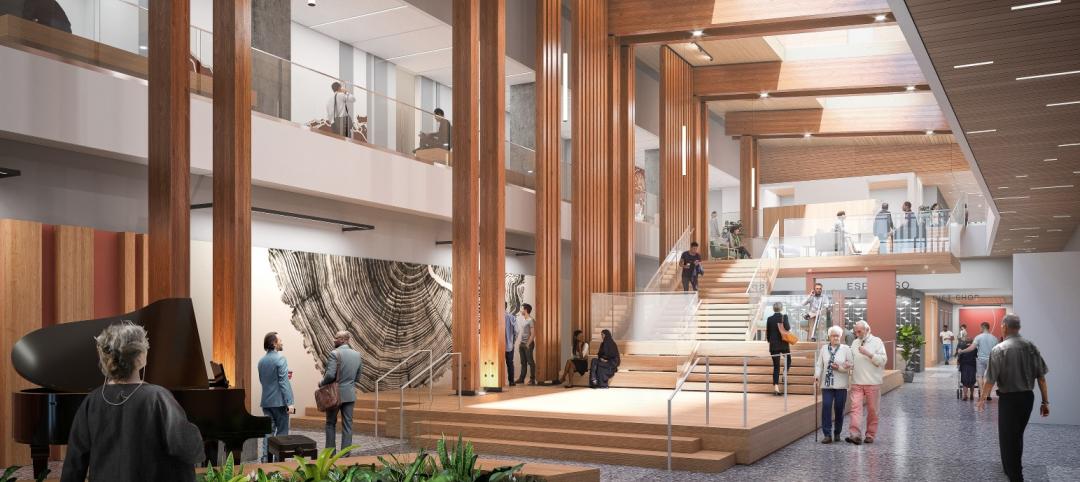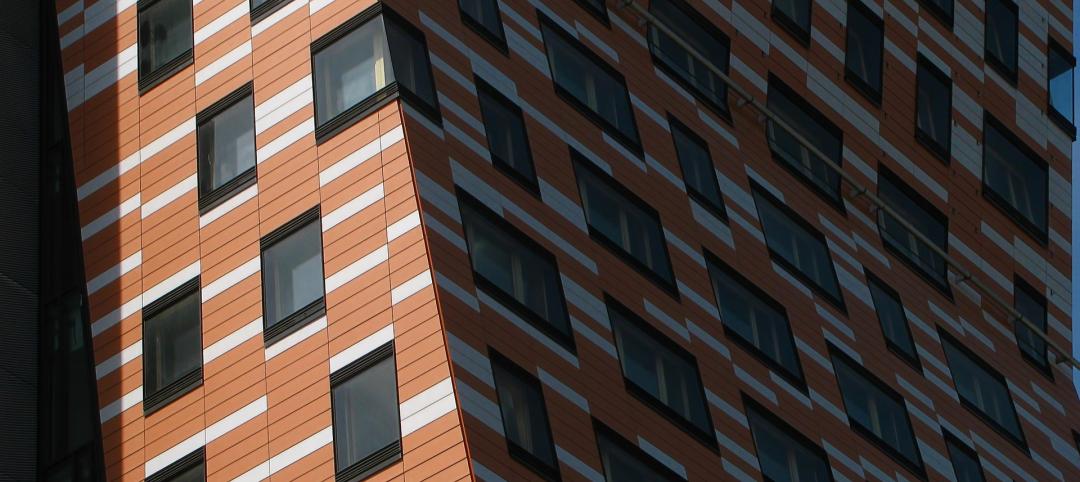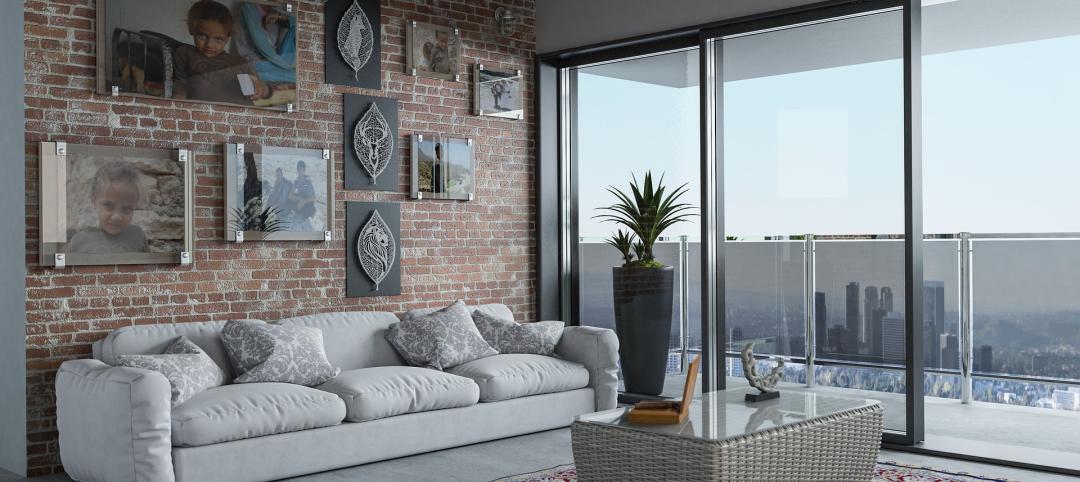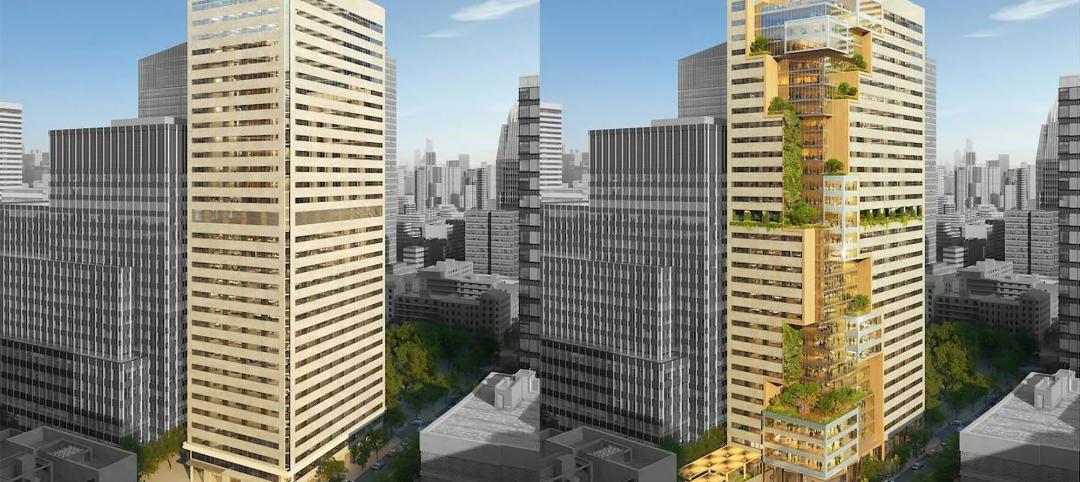Architecture firm Goettsch has been hired by developer China Resources Land Limited to design a massive project located in Neighborhood 2 of Shenzhen’s Qianhai district. The project covers 6.18 hectares and includes five commercial towers totaling 450,000 square meters—the firm’s largest project to-date in China.
The overall development totals 503,000 square meters and includes three office towers, a five-star hotel tower, an apartment tower, shopping mall, and retail stores. Goettsch is designing all of the towers, as well as the hotel and apartment podiums and their affiliated program spaces. UK-based design firm Benoy is developing the master plan and designing the shopping mall and retail areas.
The Qianhai district is a special economic zone designated for an ambitious $45 billion overall development to transform the 15-square-kilometer area into the “Manhattan of the Pearl River Delta.” Neighborhood 2 is the most recent of three Qianhai parcels sold.
The overall design concept is one of a unified complex composed of buildings with related yet individual exterior characteristics and facades designed with a textured elegance that differentiates them from the surrounding blue-glass buildings of Shenzhen.
A metallic-painted aluminum frame with consistent spacing between verticals prioritizes internal planning flexibility for the office towers. The spacing between horizontal frame elements varies from a two-story to a four-story rhythm in order to respond more individually to each office building’s height and proportions.
The frame’s vertical component is accentuated by means of double fins; this character is countered by an expression of double horizontal fins on the hotel and apartment towers that create a related yet different appearance while affording maximum flexibility for views and natural ventilation.
“We are delighted and honored to win this prestigious commission,” said James Zheng, AIA, LEED AP, President of Goettsch Partners. “We are confident to design a modern, bold and highly sustainable world class complex for the new Qianhai district.”
The commission marks Goettsch Partner’s latest project for China Resources Land. Other assignments include the Grand Hyatt Dalian, an over 400-meter-tall mixed-use tower in Nanning, the Hotel Kapok Shenzhen Bay, and two additional towers at Shenzhen Bay.
Related Stories
Building Technology | Jun 18, 2024
Could ‘smart’ building facades heat and cool buildings?
A promising research project looks at the possibilities for thermoelectric systems to thermally condition buildings, writes Mahsa Farid Mohajer, Sustainable Building Analyst with Stantec.
University Buildings | Jun 18, 2024
UC Riverside’s new School of Medicine building supports team-based learning, showcases passive design strategies
The University of California, Riverside, School of Medicine has opened the 94,576-sf, five-floor Education Building II (EDII). Created by the design-build team of CO Architects and Hensel Phelps, the medical school’s new home supports team-based student learning, offers social spaces, and provides departmental offices for faculty and staff.
Healthcare Facilities | Jun 18, 2024
A healthcare simulation technology consultant can save time, money, and headaches
As the demand for skilled healthcare professionals continues to rise, healthcare simulation is playing an increasingly vital role in the skill development, compliance, and continuing education of the clinical workforce.
Mass Timber | Jun 17, 2024
British Columbia hospital features mass timber community hall
The Cowichan District Hospital Replacement Project in Duncan, British Columbia, features an expansive community hall featuring mass timber construction. The hall, designed to promote social interaction and connection to give patients, families, and staff a warm and welcoming environment, connects a Diagnostic and Treatment (“D&T”) Block and Inpatient Tower.
Concrete Technology | Jun 17, 2024
MIT researchers are working on a way to use concrete as an electric battery
Researchers at MIT have developed a concrete mixture that can store electrical energy. The researchers say the mixture of water, cement, and carbon black could be used for building foundations and street paving.
Codes and Standards | Jun 17, 2024
Federal government releases national definition of a zero emissions building
The U.S. Department of Energy has released a new national definition of a zero emissions building. The definition is intended to provide industry guidance to support new and existing commercial and residential buildings to move towards zero emissions across the entire building sector, DOE says.
Multifamily Housing | Jun 14, 2024
AEC inspections are the key to financially viable office to residential adaptive reuse projects
About a year ago our industry was abuzz with an idea that seemed like a one-shot miracle cure for both the shockingly high rate of office vacancies and the worsening housing shortage. The seemingly simple idea of converting empty office buildings to multifamily residential seemed like an easy and elegant solution. However, in the intervening months we’ve seen only a handful of these conversions, despite near universal enthusiasm for the concept.
Healthcare Facilities | Jun 13, 2024
Top 10 trends in the hospital facilities market
BD+C evaluated more than a dozen of the nation's most prominent hospital construction projects to identify trends that are driving hospital design and construction in the $67 billion healthcare sector. Here’s what we found.
Adaptive Reuse | Jun 13, 2024
4 ways to transform old buildings into modern assets
As cities grow, their office inventories remain largely stagnant. Yet despite changes to the market—including the impact of hybrid work—opportunities still exist. Enter: “Midlife Metamorphosis.”
Affordable Housing | Jun 12, 2024
Studio Libeskind designs 190 affordable housing apartments for seniors
In Brooklyn, New York, the recently opened Atrium at Sumner offers 132,418 sf of affordable housing for seniors. The $132 million project includes 190 apartments—132 of them available to senior households earning below or at 50% of the area median income and 57 units available to formerly homeless seniors.


